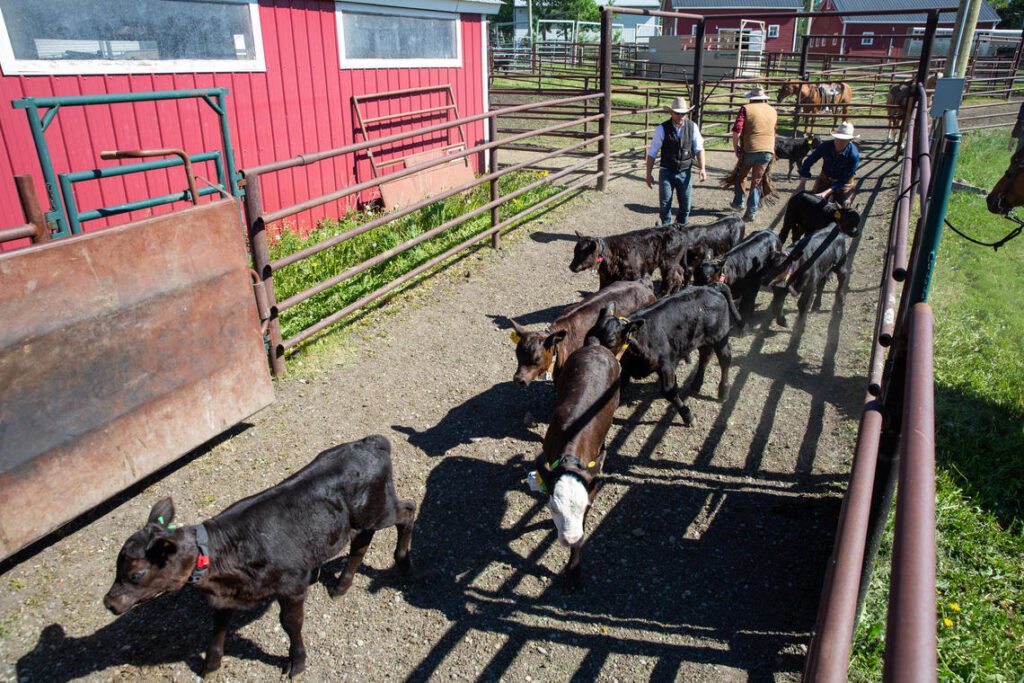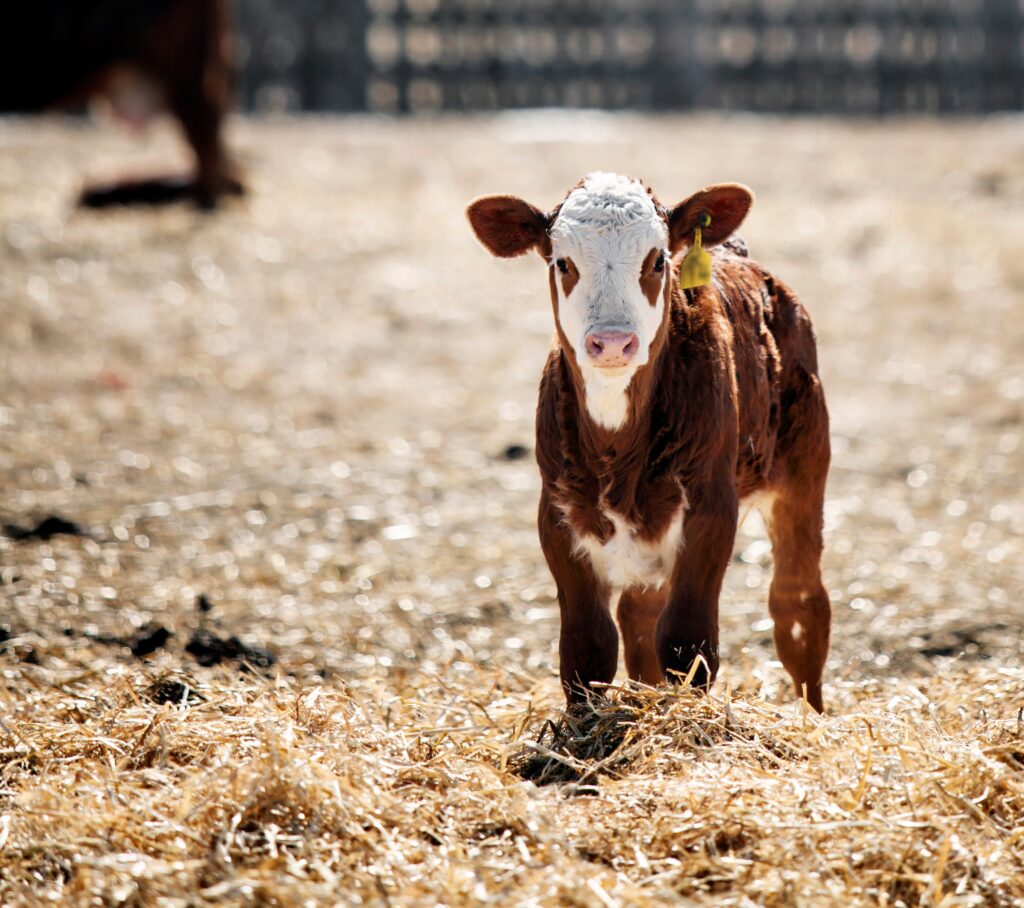On This Page:

Weaning Overview
As summer draws to a close, cow/calf ranchers must consider what the animals will eat throughout the winter months. In the absence of summer’s lush, fresh grass, the cattle will usually need to be supplied with feed – although in some cases, conditions would allow for the animals to feed on grass into the winter months. Some ranchers keep their calves over winter, but for most it is preferable to sell them off in the fall. At this time the calves are nearly as large as their mothers already, ranging from 272 kg (600 lbs) to 408 kg (900 lbs). By selling the calves in the fall, the cow/calf producers can take advantage of several benefits:
- Maximizing their year-end paycheck (rather than having a multi-year cash cycle).
- Liquidizing assets to free up cash for needed expenses.
- Avoiding the risk of losing some animals to injury, predation, disease, or theft over winter/over a longer time-frame.
- Avoiding additional costs of feed and care for more animals over the winter.
- The cows, who would have rebred during the summer, can devote their energy to growing new calves.
- Feedlots or backgrounding operations are better suited to feed animals more efficiently over winter.

Methods
Weaning is the separation of calves from their dams (mothers) and can be done in a few different ways. The most stressful method is abrupt separation, in which the cow/calf pairs are broken up and moved to separate locations without allowing for an adjustment period. In some cases the calves are loaded into trucks the same day to be sold at auction. This method has the least labor and infrastructure requirements and is the only feasible option for some producers.
By contrast, two-stage weaning allows calves to see, hear and interact with their dams, but restricts their ability to nurse. This can be done through fence-line weaning (separating the cows and calves by a single fence-line) or by fitting the calves with a clip-on nose paddle that prevents nursing for a period of time before separation. These phased approaches allow the calves to learn to eat and drink on their own in a non-stressful environment, and more gradually adapt to independence. Calves weaned this way display significantly less pacing and bawling than calves that are abruptly weaned, and there are reduced risks of damages to fences or structures by cows and calves trying to get back to each other. These methods require much higher levels of human labor, feed management and cost, and facility infrastructure.
Weaning System Opportunities

Weaning System Elements
The visual below is based on a framework proposed by Davis et al [1]. to investigate complex systems. Click on each of the icons to learn more about each system element.
For a text-only version of the visual, you can use this page.
Photo courtesy of the University of Calgary Faculty of Veterinary Medicine.
Further Reading
References
[1] M. C. Davis, R. Challenger, D. N. W. Jayewardene, and C. W. Clegg, ‘Advancing socio-technical systems thinking: A call for bravery’, Appl. Ergon., vol. 45, no. 2, Part A, pp. 171–180, Mar. 2014, doi: 10.1016/j.apergo.2013.02.009.

